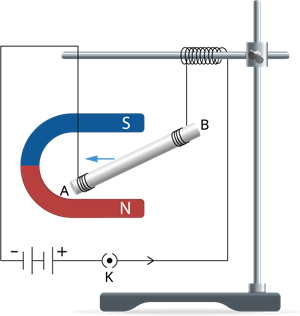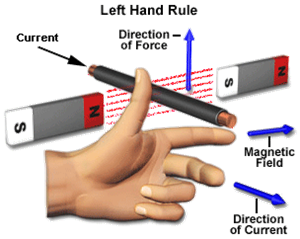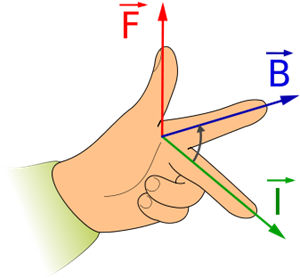PDF chapter test TRY NOW
The aluminium rod was displaced in the previous activity due to the force exerted on the current-carrying conductor when placed in a magnetic field. It also shows that when the direction of the current through the conductor is reversed, the direction of force is also reversed.

A current-carrying rod
In such condition, we can use a simple rule to find the direction of the force on the conductor.
In the previous activity, we considered the current direction and the magnetic field perpendicular to each other and noticed that the force is perpendicular to both. The se three directions can be explained through a simple rule called Fleming’s left-hand rule.

Fleming’s left-hand rule
According to Fleming's left-hand rule, stretch the thumb, forefinger and middle finger of your left hand such that they are mutually perpendicular (as shown in the figure). If the first finger points in the magnetic field direction and the second finger in the current direction, then the thumb will point in the direction of motion or the force acting on the conductor.

Fleming's left-hand rule shows the direction of the force on a current-carrying conductor in a magnetic field.
Devices that use current-carrying conductors and magnetic fields include,
- Electric motors
- Electric generators
- Loudspeakers
- Microphones, and
- Measuring instruments
In the upcoming sections, we shall study electric motors and generators in detail.
Reference:
https://commons.wikimedia.org/wiki/File:Fleming-left-hand-rule.png
https://commons.wikimedia.org/wiki/File:LeftHandRule.svg
